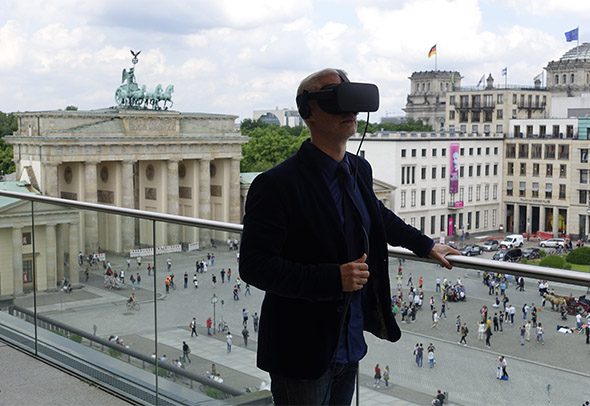The title of the 9th Berlin Biennale, The Present in Drag, taps into the blasé attitude and irritating pseudo-politics of the event’s curatorial program. Of course, this effect was not wholly unintentional. As the press release by curators DIS underscores, “the 9th Berlin Biennale will create a stage for [the] actor of the self to roleplay her own obsolescence.” The appropriation of drag culture to describe a gender-and-everything-else-fluid present is blatantly dismissive to anyone with a queer political outlook, as the exhibition renders it synonymous with a series of contemporary, neoliberal paradoxes: “the virtual as real, nations as brands, people as data, culture as capital, wellness as politics, happiness as GDP, and so on.” But what does it mean to present and equate these paradoxes if the inquiry ends there, in surface appearances? Is it possible for the Biennale, any Biennale, to address political issues in a meaningful way? “Welcome to the post-contemporary.”

Jon Rafman, View of Pariser Platz, 2016 // Photo by Berlin Art Link
In the Akademie der Künste at Pariser Platz, the main venue of the Berlin Biennale this year, visitors are met with an aesthetically commercial display. A series of backlit advertisements by LIT dot the foyer of AdK and to the right editions of TELFAR‘s custom-designed, off-the-shoulder tank tops are for sale. The cafe of the venue is transformed into a juice bar called MINT, designed by Debora Delmar Corp. to mimick health-driven, lifestyle chains, complete with upcycled furniture and posters of celebrities enjoying green juices. From the outset, the tongue is firmly in cheek.
The spatial configuration of the exhibition is praiseworthy, as the curators have made use of the mezzanines at AdK to offer viewpoints and lookouts over the space. And yet, the best works have to be sought out. In the “third basement”, accessed by elevator, Hito Steyerl‘s elaborate installation takes over the dark cement cellar, creating a kind of underground cinema, in which the artist plays with projection, reflection and shadow. Reminiscent of Harun Farocki’s ‘Serious Games’, Steyerl’s video installation ‘The Tower’ (2015) looks at a masterplan, created by Saddam Hussein, to build a modern ‘Tower of Babel’ using a pastiche of architectural references. The video mashes together images seemingly of first-person shooter, video game-like drone warfare with discussions about the bizarre design for a rebuilt Babylon.
Montreal-based artist Jon Rafman‘s oculus rift installation on the top floor balcony is definitely worth the wait. The virtual experience begins in almost the exact setting where we find ourselves, overlooking Brandenburg Gate, but without the usual flow of tourists. Suddenly, the nearby sculptures of cannibalistic hybrid animals come to life and the balcony begins to crumble beneath our feet. This anxiety-inducing work might be the most effective one in the show, tapping into an imagined future where everything is similar to the present but terrifyingly other. The piece embodies the proposed premise of the Biennale, but succeeds where many other contributions merely reflect the present back to us, ironically or apathetically.
On the opening night, a seemingly impromptu fashion show turned the elevated walkways of the building into catwalks, forcing the audience to stand frozen on the sidelines or, in order to move about, join the performative parade of white-suited models. This was perhaps the most fitting metaphor for the whole experience at AdK, where “investing in fiction is more profitable than betting on reality,” and where we are all supposed to become agents of our own obsolescence. It’s a case of privileged nihilism par excellence.
Exhibition
9TH BERLIN BIENNALE
Group Show: ‘The Present in Drag’
Exhibition: Jun. 04 – Sep. 18, 2016
Pariser Platz 4, 10117 Berlin, click here for map


























